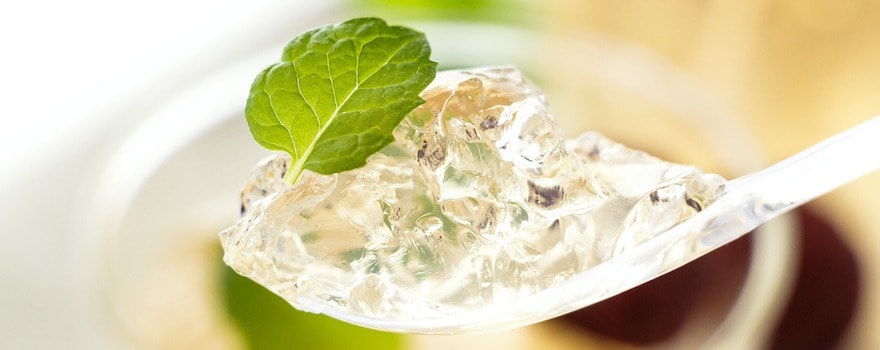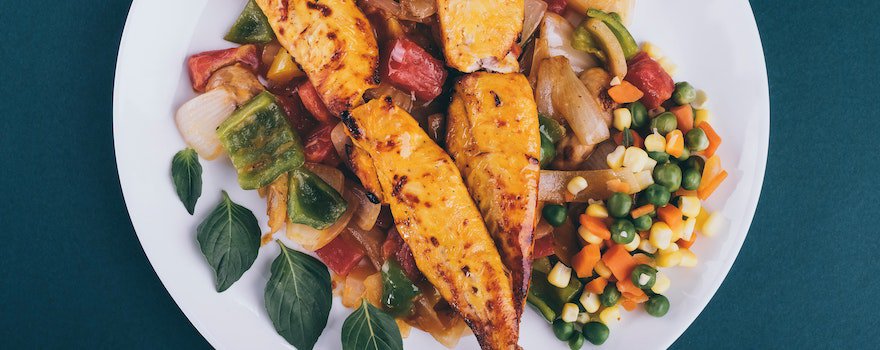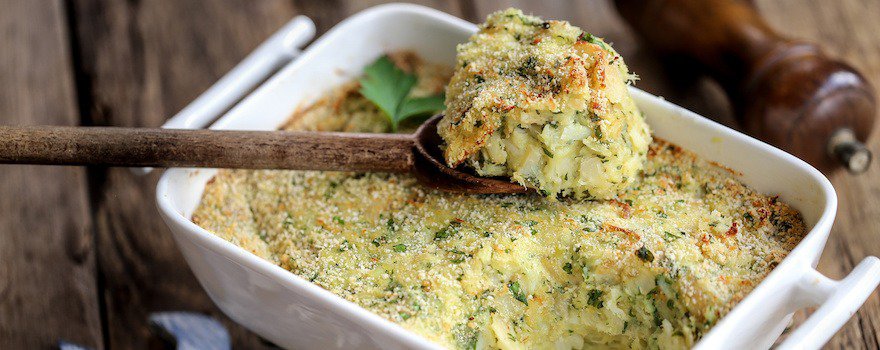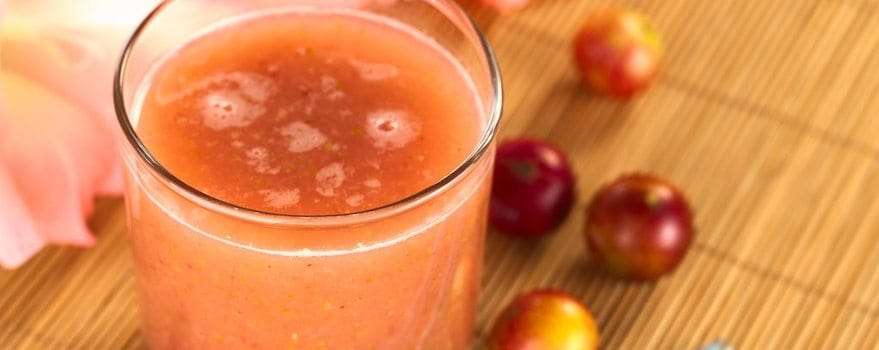Collagen is a major protein that ensures the maintenance of our tissues. It is found in rare foods: bones, meat cartilage, skin, and fish bones, for example.
Other foods provide our body with the nutrients that support collagen production. This includes vitamin C and amino acids like proline, lysine, and glycine found in collagen protein.
Here are 5 foods to prioritize to increase collagen production! Check out the list to learn all about collagen.
Also read | Best Marine Collagen: Our Tips for Choosing Well
1. Gelatin

Gelatin is obtained from the skin and bones of boiled animals. Rich in protein, it contains amino acids like proline, glycine, and lysine, which help synthesize collagen. This preliminary study involving collagen extracted from chicken cartilage showed its effect on short-term collagen synthesis.
How to consume it: Gelatin can be found in powder or sheet form. It’s used to make panna cotta or aspics. You can also make a homemade broth with quality pieces like marrow bones or parts of cartilaginous poultry.
2. Turkey

Turkey is a white meat particularly rich in proteins and amino acids, notably glycine. This in vitro study shows the key role of glycine in collagen synthesis. It is also a good source of zinc, a trace element that supports protein synthesis.
How to consume it: Opt for turkey breasts as they are leaner and contain slightly more protein than thighs or drums. Preferably choose organic or label rouge meat. You can cook it with a curry and coconut milk sauce or homemade chili paste. Or sautéed slices with seasonal vegetables.
3. Cod

Cod is just salted Atlantic cod! It’s a cold-water fish primarily found in the Atlantic. Cod is an excellent source of lysine, an amino acid that plays an important role in the formation of collagen fibers.
How to consume it: You can prepare it in a brandade with potatoes and parsley. Or draw on Portuguese cuisine by making a stew with potatoes, tomatoes, peppers, and carrots.
4. Royal Jelly

Royal jelly is a whitish liquid produced by bees to nourish the queen and the larvae. It is rich in antioxidants in the form of amino acids. It helps to stimulate collagen production. A study conducted on rats demonstrated its effectiveness in collagen production.
How to consume it: Fresh royal jelly is particularly nutrient-rich. It can be found from a beekeeper or in an organic store. It is also available in capsules, tablets, or ampoules.
Also read l Royal Jelly: Our Buying Guide
5. Camu Camu

Camu camu is a small fruit native to the Amazon. It belongs to the same family as guava. It is a fruit highly loaded with vitamin C. It contains almost 20 times more than kiwi! Vitamin C plays a key role in collagen synthesis as highlighted by this article.
How to consume it: Choose organic camu camu. Its taste is bitter. It is usually found in powder form, which can be added to juice, smoothies, applesauce, or porridge. It can also be used in a citrus cheesecake or a carrot cake.
Collagen, the structural protein of our body
What is collagen?
The term collagen comes from the Greek kólla meaning glue. Some ancient peoples used animal collagen to make one of the earliest forms of glue.
Collagen is the most abundant protein in our body. It is particularly found in the bones, skin, muscles, cartilage, ligaments, and tendons. Our tendons, which we use extensively during our movements, are almost exclusively composed of it! Collagen also provides the skin with its suppleness and elasticity.
We synthesize this protein throughout our lives, but in a declining manner. Naturally, our skin will loosen and sag as we age. The cartilage in our joints may also deteriorate.
Our lifestyle habits, such as smoking or alcohol consumption, can impact collagen production. Likewise, overexposure to UV rays and pollution do too.
Also read 16 foods and dietary supplements good for the skin
How to promote collagen production?

Like all other proteins, collagen consists of a chain of amino acids. Proline, glycine, and lysine are among the most important. Adequate intake of these amino acids supports its production. Gelatin contains these three amino acids.
Vitamin C is crucial in the synthesis of collagen, as highlighted in this article. It acts as an assistant to two enzymes responsible for accelerating its manufacturing process. Camu camu and acerola are very good sources.
Sometimes called the “protein of youth,” it is also available as a dietary supplement. It is often found in the form of hydrolyzed collagen, meaning the molecule has been partially fragmented. Questions around the assimilation and bioavailability of the different forms of collagen continue to be the subject of research. To recall, the bioavailability of a nutrient refers to the portion that is effectively assimilated and utilized by the body.
Also read Our tips to naturally boost collagen production
Focus on marine collagen
A good alternative
Like other species, fish also contain collagen. It is notably found in their skin and bones. It is mainly consumed in the form of dietary supplement (collagen peptides).
Marine collagen is an alternative to bovine or porcine collagen for people following restrictive diets.
Several studies have been conducted on marine collagen. This one, for example, focuses on the use of salmon collagen to regenerate bone tissues. This other study conducted on mice suggests the potential antioxidant role of marine collagen peptides.
Choosing marine collagen wisely
The fishing industry generates a lot of waste from fish processing (skins, bones, etc.). The production of marine collagen from these materials can be seen as a way to valorize them. Of course, procedures ensuring the quality of these materials must be implemented.
When looking to purchase marine collagen, we recommend paying attention to the origin of the products. It can be reassuring to be able to consult certificates indicating the absence of heavy metals.
The sustainability of the aquaculture and fishing methods employed is also a choice factor, as is the certification of non-GMO absence.



